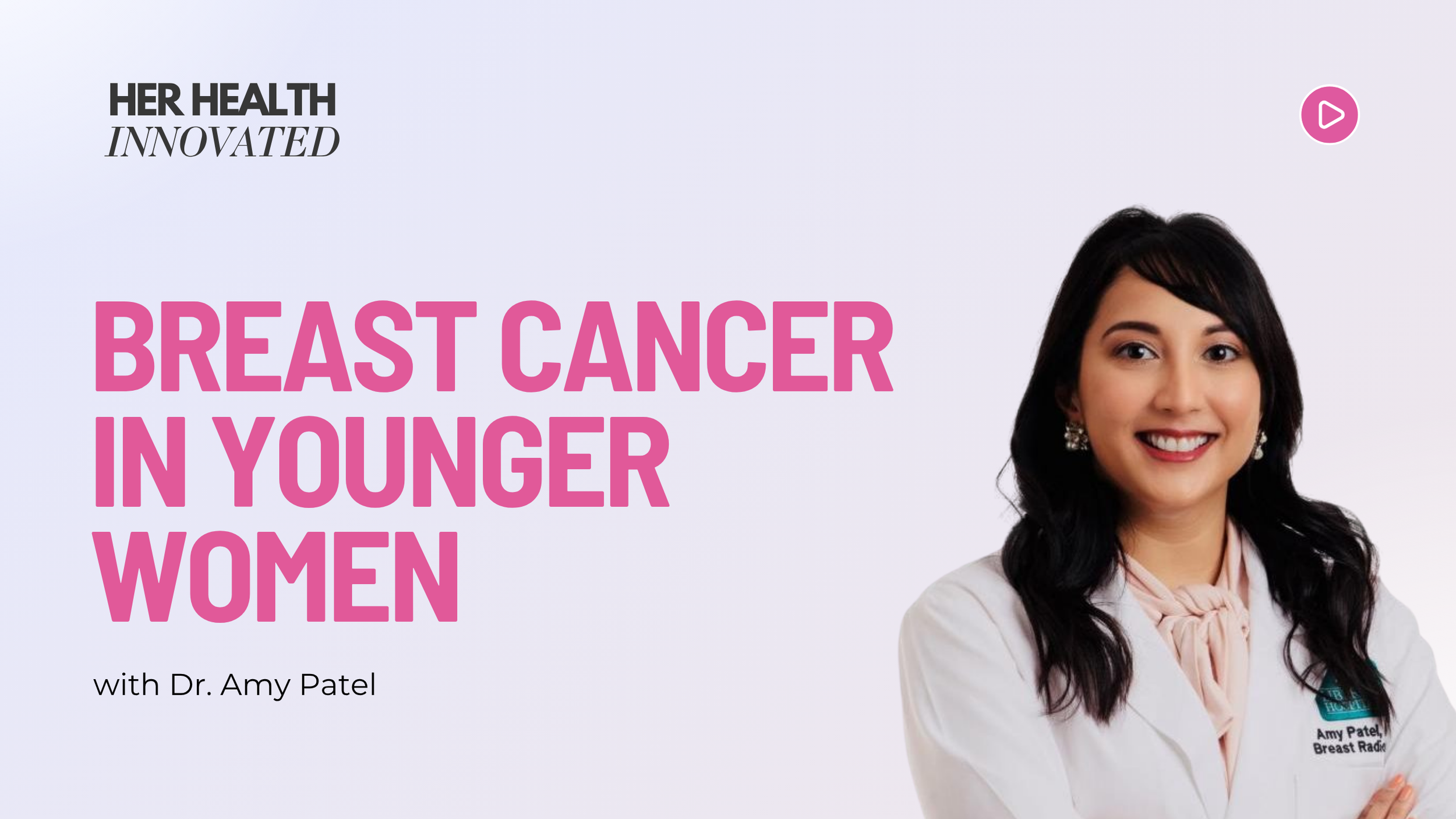S1 E01: Breast Cancer in Younger Women with Dr. Amy Patel
Click here to listen on Apple Podcasts
In towns where access to women’s health once meant long drives and limited choices, a young girl noticed the gap—and never forgot it. That girl grew up to become Dr. Amy Patel, a breast radiologist and nationally recognized advocate who has reshaped how patients receive care.
For the very first episode of Her Health Innovated, Dr. Patel reflects on her journey into medicine, the rise of breast cancer among young women, and why innovation and advocacy must go hand in hand if we’re going to close the gaps she witnessed early in life.
Could you share with us a little bit about what inspired your advocacy around breast health and radiology?
Dr. Amy Patel: My passion really stemmed from an early age, and many who know me are familiar with my story and what has fueled it. I grew up in rural Northwest Missouri where it was clear that access to care was lacking. We had only one woman physician in town, and there wasn’t much emphasis on women’s health.
When I entered medical school, I knew I wanted to focus on women’s health and thought I’d pursue primary care, return to my hometown, and serve there. But then I discovered breast imaging. A friend whose mother is a breast radiologist encouraged me to shadow her and do an elective, and I fell in love with the field. It encompassed everything I cared about, especially women’s health advocacy and access.
I saw how many avenues there were to make an impact in breast cancer care and radiology. That’s where it all began—seeing disparities where I grew up. It may sound corny, but it feels like a true calling for me. I believe I’ve been put in this position to help as many patients as possible, and I try to do that every day.
Why are we seeing more breast cancer diagnoses in women under 40 today? And what does this mean for how we approach early detection?
Dr. Amy Patel: I think it’s wonderful that we are shining a light on breast cancer in young women. The reasons we are finding it more often are multifactorial. First, we now know that all women, regardless of background, should be risk-assessed by age 25. If a patient is deemed high risk, we recommend earlier and heightened imaging surveillance, such as annual breast MRI from ages 25 to 29. Starting at age 30, annual screening mammography alternating with breast MRI every six months is recommended by groups like the ACR and NCCN.
Other factors include genetics. We’re identifying more genes that predispose women to breast cancer. For example, Ashkenazi Jewish women are more likely to carry BRCA1 or BRCA2 mutations. African American women are more likely to develop triple-negative breast cancers, which are aggressive and often occur at younger ages.
Environmental factors also play a role. Alcohol consumption is increasingly linked to breast cancer, and obesity is a strong risk factor. Unfortunately, obesity is prevalent, but healthy lifestyle choices—reducing alcohol, maintaining a balanced diet, and exercising—can help lower risk.
Ultimately, it’s not only surgeons or oncologists who should share this information. As breast radiologists, we must also educate our patients about their risks and how to reduce them.
How can younger women take charge of their breast health today? And how can they advocate for themselves in the exam room and beyond?
Dr. Amy Patel: First, make sure you’re seeing your OB-GYN and primary care provider regularly. I also encourage clinical self-breast exams. While some organizations question their effectiveness, I personally recommend performing one seven to ten days after your menstrual cycle if it can become part of your routine.
Most importantly, listen to your body. If something feels off, get it checked right away—don’t wait. The most heartbreaking cases I see are young women who delayed seeking care after finding a lump, only to later be diagnosed with breast cancer. Many of them blame themselves, but I remind them that sometimes a lump is just dense tissue or a cyst. Still, it’s crucial to get evaluated promptly.
And remember, every woman should be risk-assessed by age 25. Even without a family history, other factors can raise lifetime risk and may mean starting imaging surveillance earlier than 40. These are important things young women need to know to protect their health.
Dr. Patel shows what it means to turn early experiences into lifelong purpose. Through her work in radiology, policy, and patient education, she is ensuring that women—including young women too often overlooked—have the knowledge and access they need.
This is the vision of Her Health Innovated: voices that break barriers and ideas that advance what’s possible in women’s health. And with this first episode, the conversation has only just begun.

